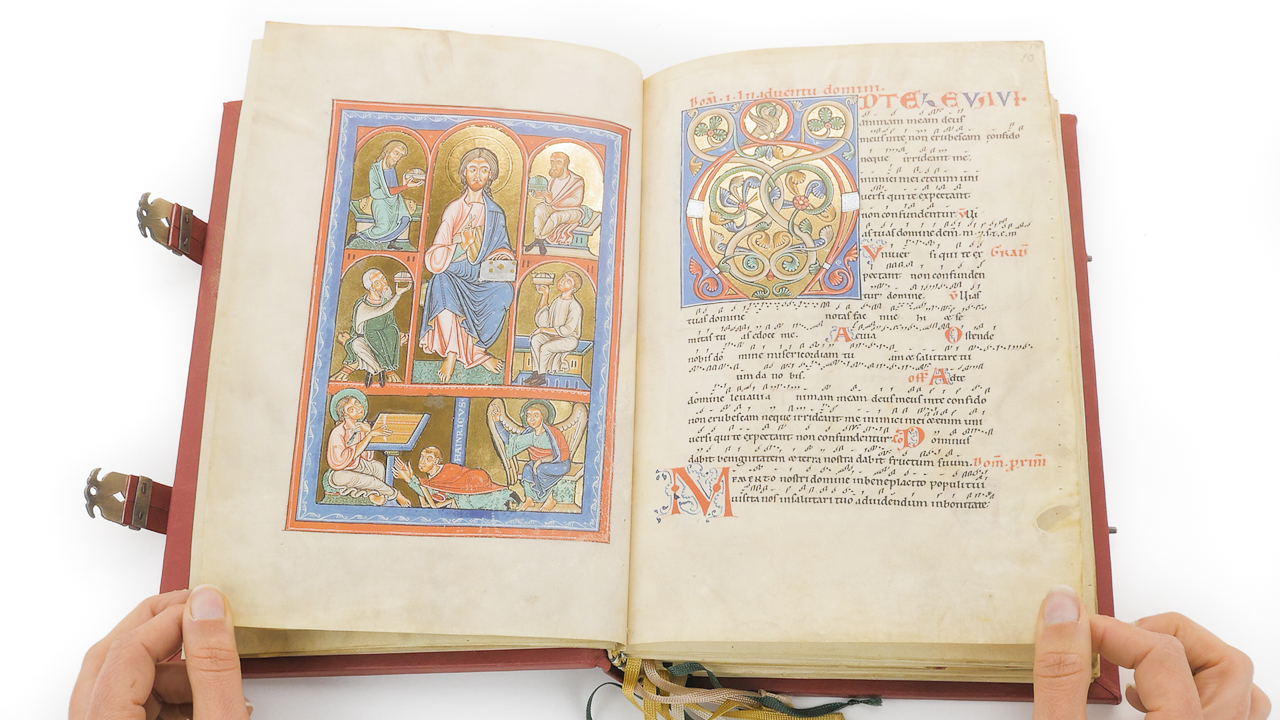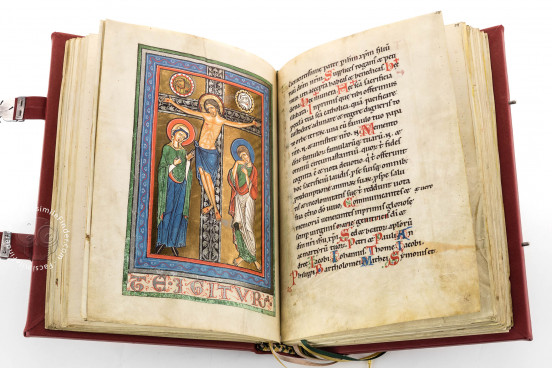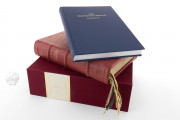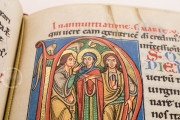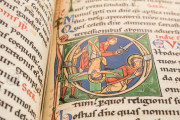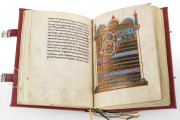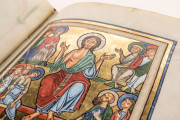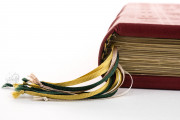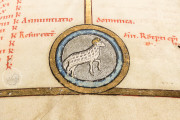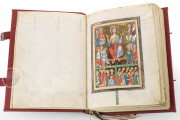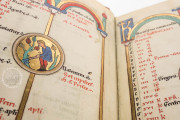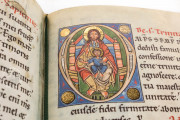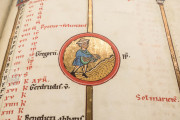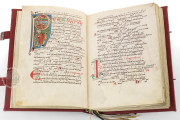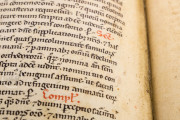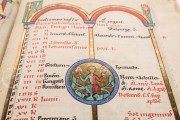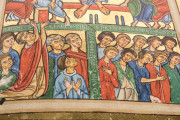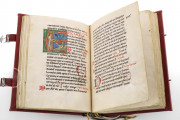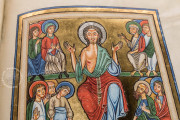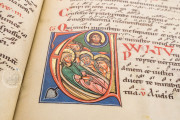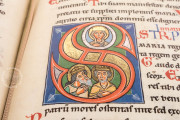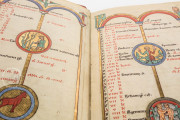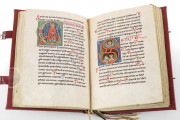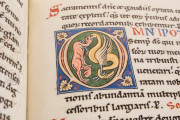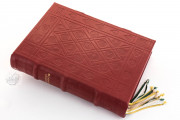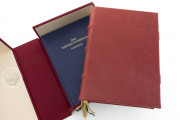The Hainricus Missal is a stunning example of late Romanesque manuscript illumination. Made at the Benedictine monastery of St. Martin at Weingarten in southern Germany around 1220-1225, it comprises prayers and chants for the Christian liturgy of the Mass arranged in annual cycles. It was made at the behest of Hainricus, a monk of the abbey who was responsible for the monastery church's vestments and vessels. Its splendid illumination includes five full-page miniatures and thirty-five historiated initials.
The manuscript's chants and prayers are not integrated but presented in separate sections of the book. The principal sections are a gradual (chants of the Mass), a sequentiary (sung embellishments to the Alleluia), and a sacramentary (prayers).
Dazzling Miniatures
The miniatures are grand compositions of brilliant color, gold, and silver in a figure style and palette rooted in twelfth-century manuscript painting. The Annunciation to the Virgin opens the calendar (fol. 1v), a pair of miniatures on apocalyptic themes precedes the gradual (fols. 9r-v), and the Coronation of the Virgin Mary in Heaven and the Crucifixion open the sacramentary (fols. 57r-v).
Hainricus Offers His Book to Christ and Prays to the Virgin
Hainricus is pictured in three of the miniatures. He is shown offering a book to Christ of the Last Judgment (fol. 9r) and kneeling at the feet of Saint John the Divine as he witnesses Christ adored by the elders of the Apocalypse (fol. 9v). He also appears in the miniature of the Annunciation, where he implores the Virgin to have mercy on him (fol. 1v).
Stories in Painted Initials
The missal's major decoration includes historiated initials—painted initials with identifiable scenes or figures—for the most solemn feast days. These often represent aspects of the feasts they introduce in the three sections of the manuscript. For example, the initials for Christmas show the Nativity, Christ of the Second Coming, and the Annunciation to the Shepherds (fols. 11v, 32r, and 61v).
Embroidered Parchment
The missal's writing, like its painting, is conservative. The text is in the Transitional Script of the long twelfth century. This script retains the roundness of Caroline Minuscule at a time when a more angular and compressed minuscule was coming into favor throughout Europe.
A great delight of the Hainricus Missal is the colored silk embroidery stitching that appears in the margins of some of the pages. Some patch together two pieces of parchment to fill out the corner of a leaf (e.g., fol. 74). Others seem to join deliberate cuts to the parchment (e.g., fol. 54), and some fill in small holes in the parchment (e.g., fol. 77). Another textile embellishment of the missal is its removable thirteen-strand bookmark of colored woven silks and braided linen.
The Weingarten Treasure
Together with two Gospel books donated to Weingarten by Judith (1032-1094), Countess of Flanders, (New York, The Morgan Library & Museum, M. 708 and M.709) and the Berthold Sacramentary, the Hainricus Missal formed the "Weingarten Treasure," which, after sojourns in Salzburg and Fulda in the Napoleonic era, was purchased in 1818 by Thomas William Coke (1752-1842), later Earl of Leicester.
J. P. Morgan (1867-1943) acquired the four manuscripts—all remarkable for their treasure bindings—in 1926 from the first earl's grandson, Thomas William Coke (1848-1941), Earl of Leicester. They were destined for the institution he founded in 1924 to make his father's and his libraries available to the public (now the Morgan Library & Museum).
The manuscript is preserved in its original binding of red deerskin over boards, with silver furnishings and cabochon crystals. The front cover features a silver repoussé plaque depicting the Coronation of the Virgin, with evangelist symbols and the kneeling patron, labeled "Hainricus Sacrista."
We have 1 facsimile edition of the manuscript "Hainricus Missal": Hainricus-Missale facsimile edition, published by Akademische Druck- u. Verlagsanstalt (ADEVA), 2005
Request Info / Price
